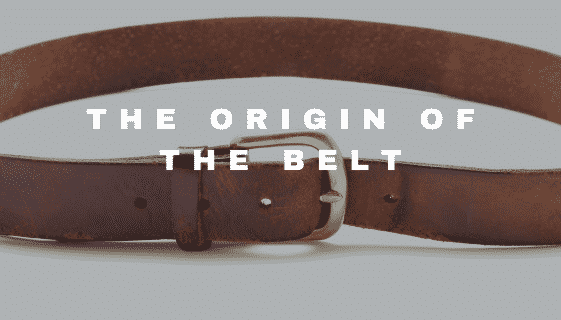
Birth, characteristics and origin of the belt.
The origins of the belt: from the Stone Age to the Roman era
Each of us has worn and knows what a belt is for, what many do not know is the story of this extraordinary product symbol of Made in Italy.
The first, primitive, belt forms have their roots many years ago, more precisely than the Neolithic. Born as an accessory to tighten the life, the belt is one of the first garments with a value not only practical, but also social and religious. In the civilizations preceding the Roman era this accessory is in fact established as a garment with a function of definition of classes and social classes. On it could be applied accessories or tools useful to their craft, sword if you were soldiers or tools if you were craftsmen.
The quality of the material and the workmanship of the buckle, instead, reflected the wealth and well-being of the wearer.
This way of understanding the belt is affirmed in Roman culture, in fact during this historical period this chief takes different names according to the social value. Cingulum was the name for the belt used by civilians, while balteus was the name reserved for that of soldiers. The total absence of this accessory indicated the status of slaves.Usually the buckles were richly decorated and recalled subjects of mythology and religion.
Even today religion and belts have a very strong bond. All religions, keep traces of belts or at least cords, used in sacred ceremonies and in the embellishment of the priest’s clothing. Even today the girdle is an integral part of the clothing of the Catholic priest. Even the friars still use a cord to tie at the waist, so as to tighten the habit. Although since the fifteenth century the belt is stripped of its religious significance some of these habits have not been completely dispersed, many primitive peoples still use belts to try to prevent and cure diseases.
The history of this garment is therefore more ancient and important than you think, as an important element of ancient cultures such as Egyptian, Greek, Jewish and Roman.
Medieval and Renaissance: belt also for women
During the Middle Ages the belt lost its social connotation, but maintained its role as an accessory that still continues to distinguish the richness of the wearer. In this period, in Florence, many leather workshops were engaged in the production of belts, starting a legendary tradition that is still the flagship of the Tuscan capital.
The main novelty of the Middle Ages, however, is that this garment, once reserved only to a strictly male audience, begins to be worn by the ladies of the time. The fashion of wearing corsets and bodices leaves room for large tunics more comfortable, requiring precisely a belt able to gird the waist. This garment therefore becomes a symbol of sophistication for women, as can be seen from numerous canvases of the time where frequently the belt stands out to the eye more than the rest of clothing.
This innovation kept however practical elements typical of the past, the buckle in fact soon became more and more widespread, because of its practicality. The women who used the belt used to direct the buckle to the left, while the men carried it to the right. Even this latter custom has its roots in the past, as it was a practical solution for soldiers, usually right-handed, so that in combat they could easily extract the sword, which usually hung from the left side.
From the eighteenth century to today: the belt becomes an iconic garment
In the following years the belt returns to its ancient purpose: to distinguish the military from the civilians. The former wear functional belts and tightly tied to their uniform, while the latter carry this accessory freely, to different heights and why not attached to the straps, making it the garment symbol of style and elegance that is now.
Nowadays this item of clothing has been definitively consecrated as an essential accessory for feminine and masculine looks, both elegant and casual, since now available in many variations and styles.
When choosing to buy such a product, however, account must be taken of the manufacture of the product and, without doubt if you choose to buy a high quality belt the first choice would definitely be a leather belt made in Italy.
The leading company in the sector is Florence leather market, an e-commerce purchasing platform where you can find the best leather products such as: suitcases, bags, shoulder bags, wallets and of course belts.
By registering on this site you can access the exclusive promotions and buy the products you want, being sure to buy leather treated by the best Florentine artisans.